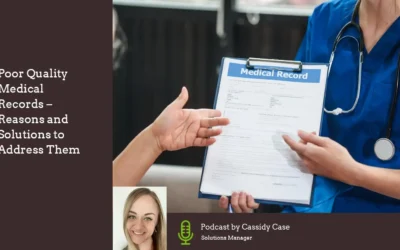Managed Outsource Solutions (MOS) has a team of highly qualified paralegals and professional writers. They provide timely, efficient, and affordable deposition summary services to help to attorneys handle voluminous deposition transcripts.
In today’s podcast, Jessica Schwartz, one of our Solutions Managers, discusses the strategies for drafting deposition summaries.
Podcast Highlights
00:11 What is Deposition Summary?
00:57 Why Do Attorneys Need Deposition Summaries?
01:33 Different Types of Deposition Summaries
02:52 Deposition Summary Preparation
04:40 Time Needed To Complete the Summarization
Read Transcript
00:11 What is Deposition Summary?
Deposition summary has a key role to play throughout any litigation process. It will be quite time-consuming for the lawyers to handle voluminous deposition transcripts, as it often includes hundreds of pages. Deposition summaries provide a brief overview of the deposition and helps in the pretrial preparation for attorneys. By outsourcing deposition summary preparation, lawyers can better concentrate on the litigation process. Throughout the litigation process, both the parties will rely on the deposition summary. Paralegals or expert summarizers at medical record review companies use certain strategies to summarize the deposition transcripts in a compact form.
00:57 Why Do Attorneys Need Deposition Summaries?
Attorneys rely on deposition summaries to
- prepare for pretrial
- easily analyze the large volume of information
- speed up the trial process and verdict
- highlight key points using charts or graphs
Deposition testimonies contribute greatly to bringing out the real facts from the witnesses. Well-documented deposition summaries are extremely useful during the course of a trial.
Check out our website to listen to our podcast, “Structure, Content and Uses of a Deposition Summary”.
01:33 Different Types of Deposition Summaries
The different types of deposition summaries include page-line summary, page-by-page summary, topic-by-topic summary, chronological summary, or narrative summary.
- Page-line summaries are mainly formatted to include columns for page-line, exhibit and summary of testimony. With this summary type, often one page of summary will be prepared for every five or more pages of testimony.
- Similar to the page-line summary, page summary is where the necessary points in a few pages are shortened and presented in two columns.
- Topical summaries are deposition summaries prepared based on predefined topics. This summary type is helpful in fact-oriented cases like workers’ compensation and has 3 columns – topic, pages, summary.
- With chronological summary, the summary is abridged and arranged in chronological order. This option is ideal, especially in personal injury and criminal lawsuits.
- In the narrative summary type, the summarized facts are presented in a narrative format and arranged as per the verbatim transcript.
Based on the requirement and the lawsuit they are dealing with, attorneys can determine the type of summary needed.
02:52 Deposition Summary Preparation
Reviewing the pleadings
To prepare an accurate summary, the summarizer must fully understand the exact complaint of the plaintiff or the witness. They must consider reading the entire deposition and know what the attorney aims at and how the witness responds or refuses to answer, to determine the nature of the case and the validity of the allegations. Focusing on the allegations will facilitate the summarizer to assimilate the supporting statements.
Identifying the information needed
The next strategy is to annotate the key statements by choosing the relevant points to be Included in the summary. This will help to explain the correct statements favoring the lawsuit. Summarizers must make sure to avoid any unrelated information from the summary and include only the key points so that it helps readers understand things in a timely and accurate manner. Also, include the breaks taken by the witness between specific statements, making it easy to locate the relevant summary parts.
Focusing on presentation
The way the summary is presented really matters. Plan the integral parts of the deposition and choose the presentation style and the summary type. Clear presentation format using columns will make the document easily graspable for the readers. It is best to provide the summary in two columns: a wide column on the right (testimony’s summary including the date, case, and witness name) and narrow column on the left (page numbers).
You can also read on our website – “Key Tips To Summarize Deposition Testimonies”.
04:40 Time Needed To Complete the Summarization
The time needed to complete the summarization depends on key factors such as whether the witness is a layman or a professional, the size of the transcript and the complexity of the case. Professional medical record review companies provide the services of skilled summarizers and paralegals who can easily deal with the intricacies involved in summarizing depositions. For error-free deposition summaries, it is important for the summarizer to clearly understand the main points associated with the testimony, as well as all the legal points related to the deposition.
You can also read on our website – “What Constitutes A Good Deposition Summary?” and “Deposition Summary And Its Use In A Personal Injury Case”.
Thank you for listening. We hope you have a good day.



